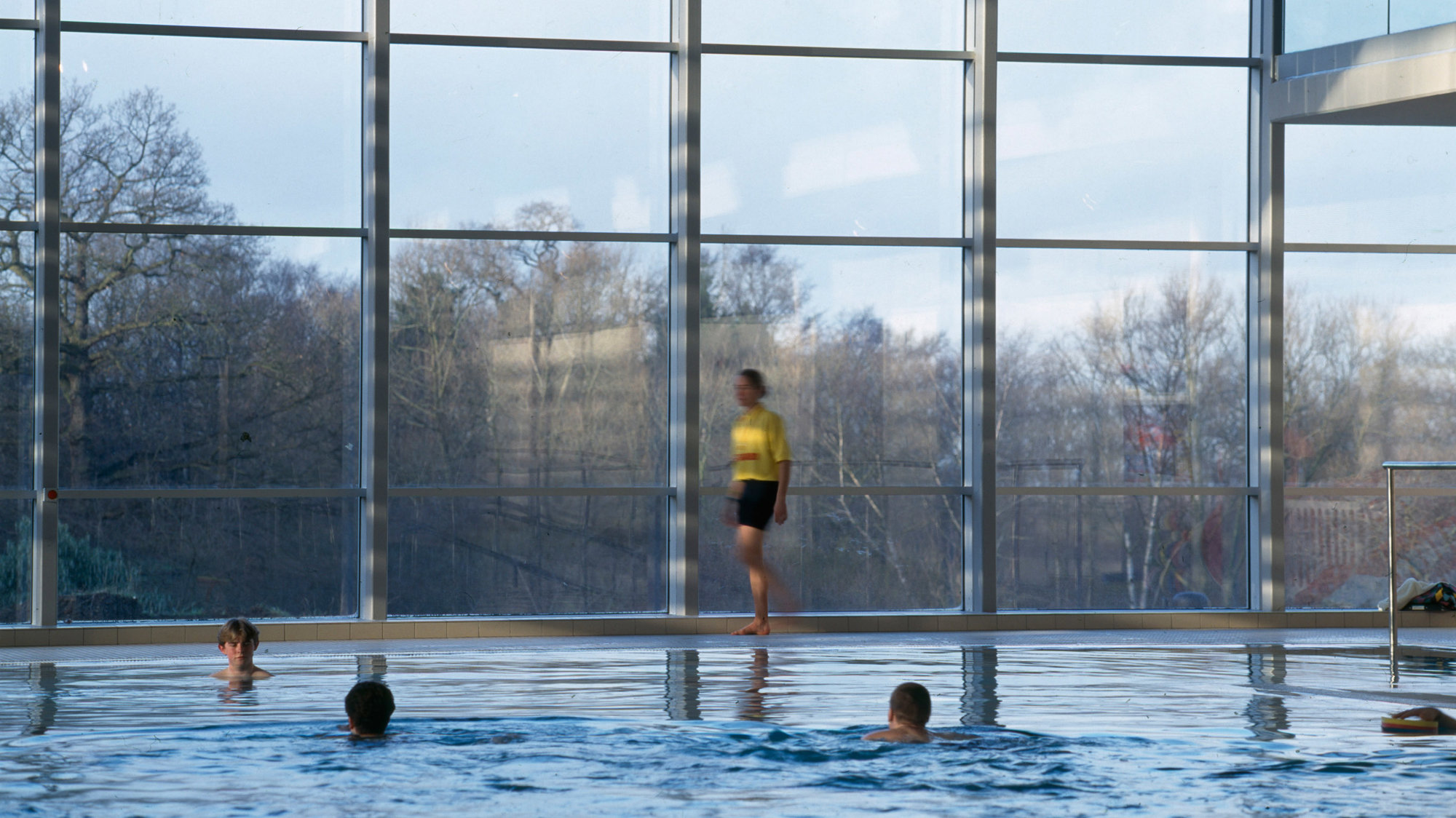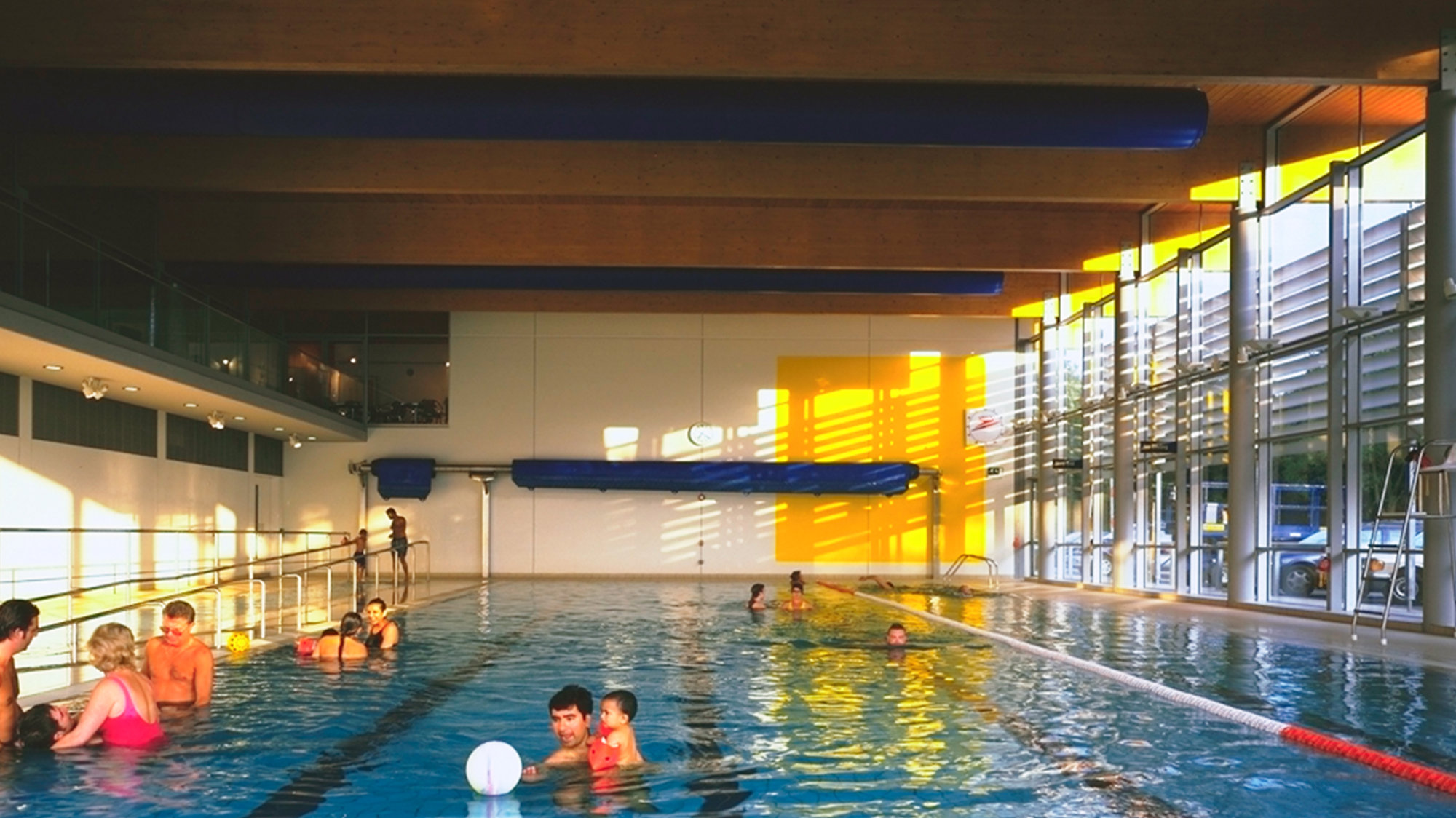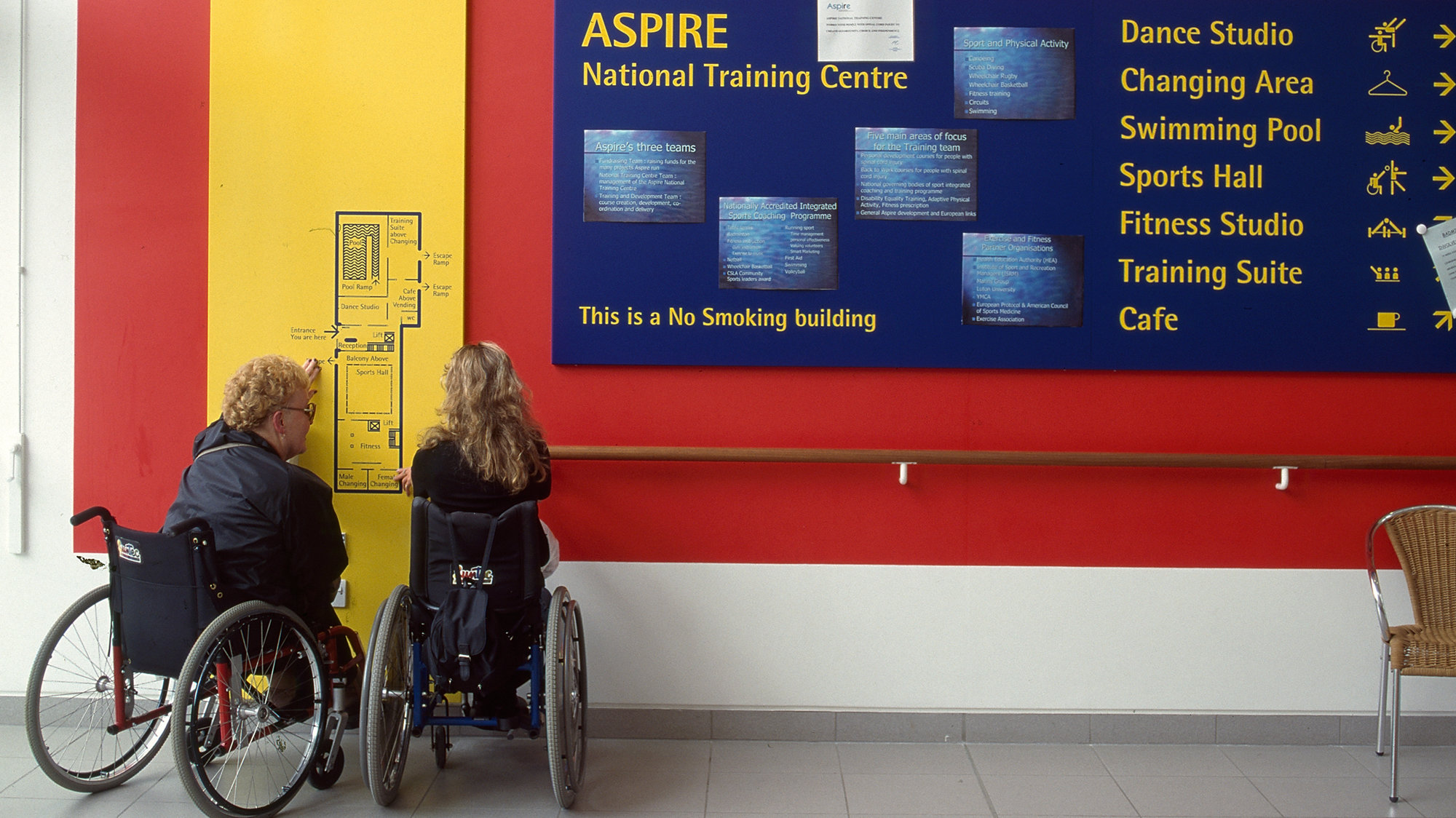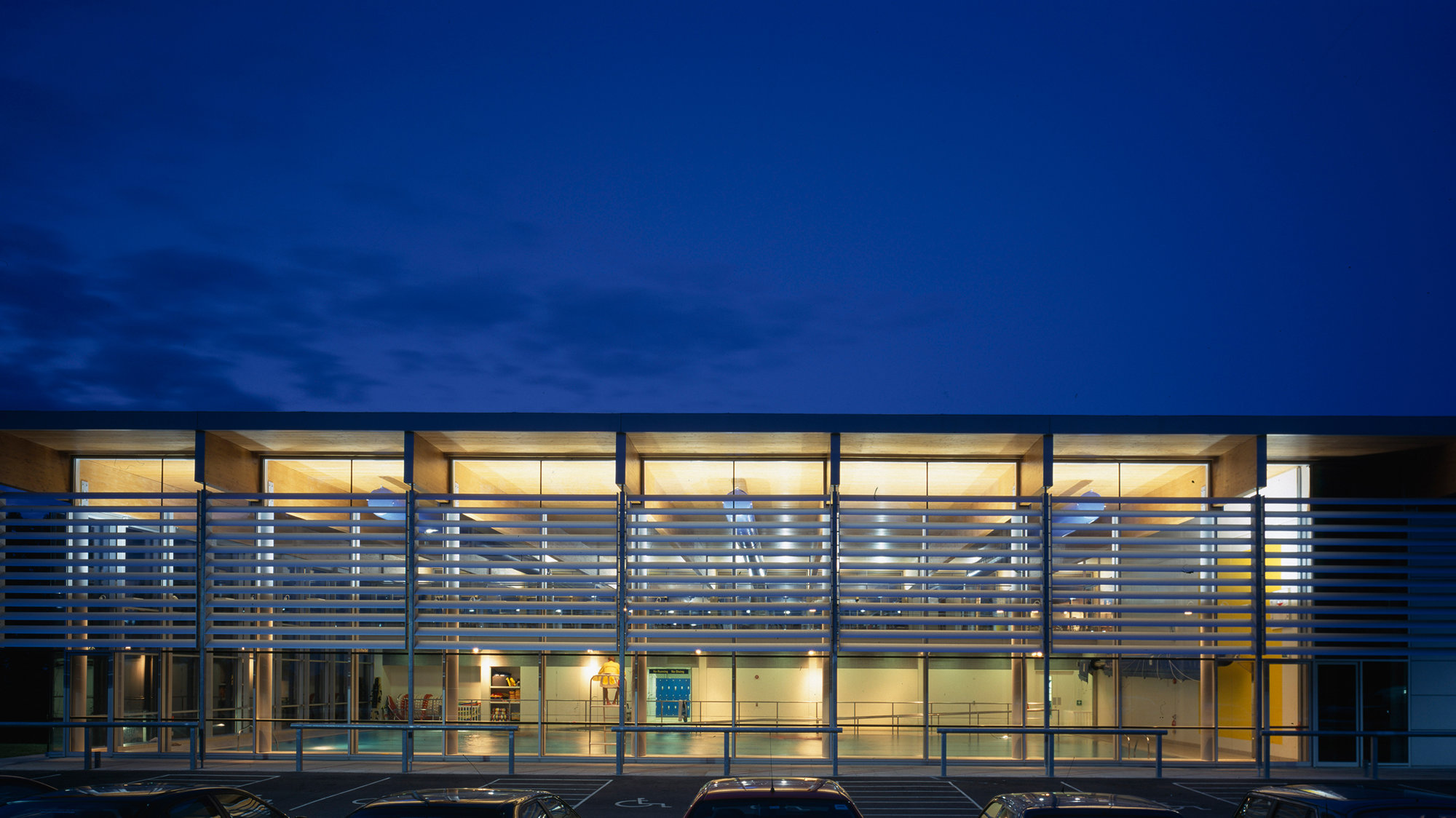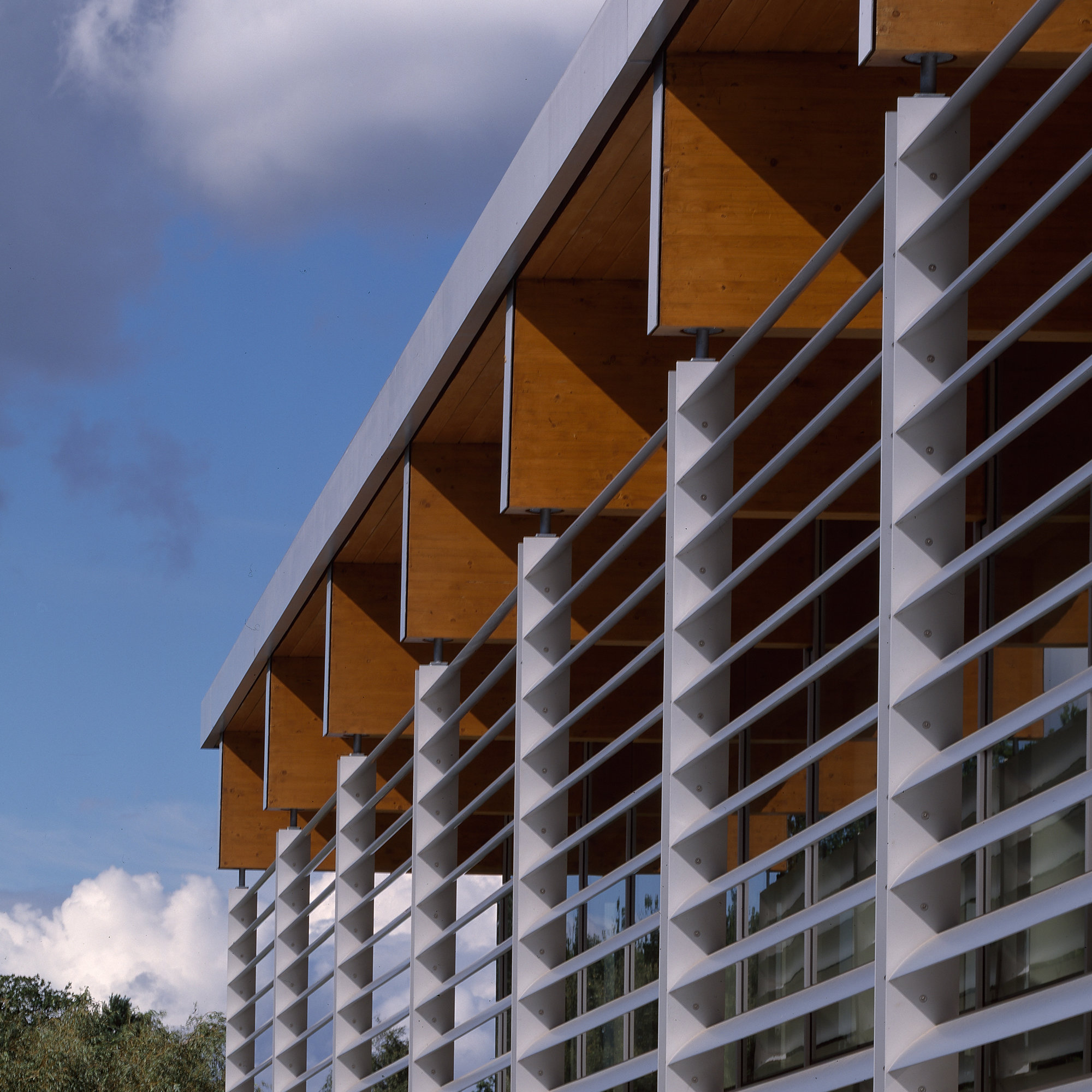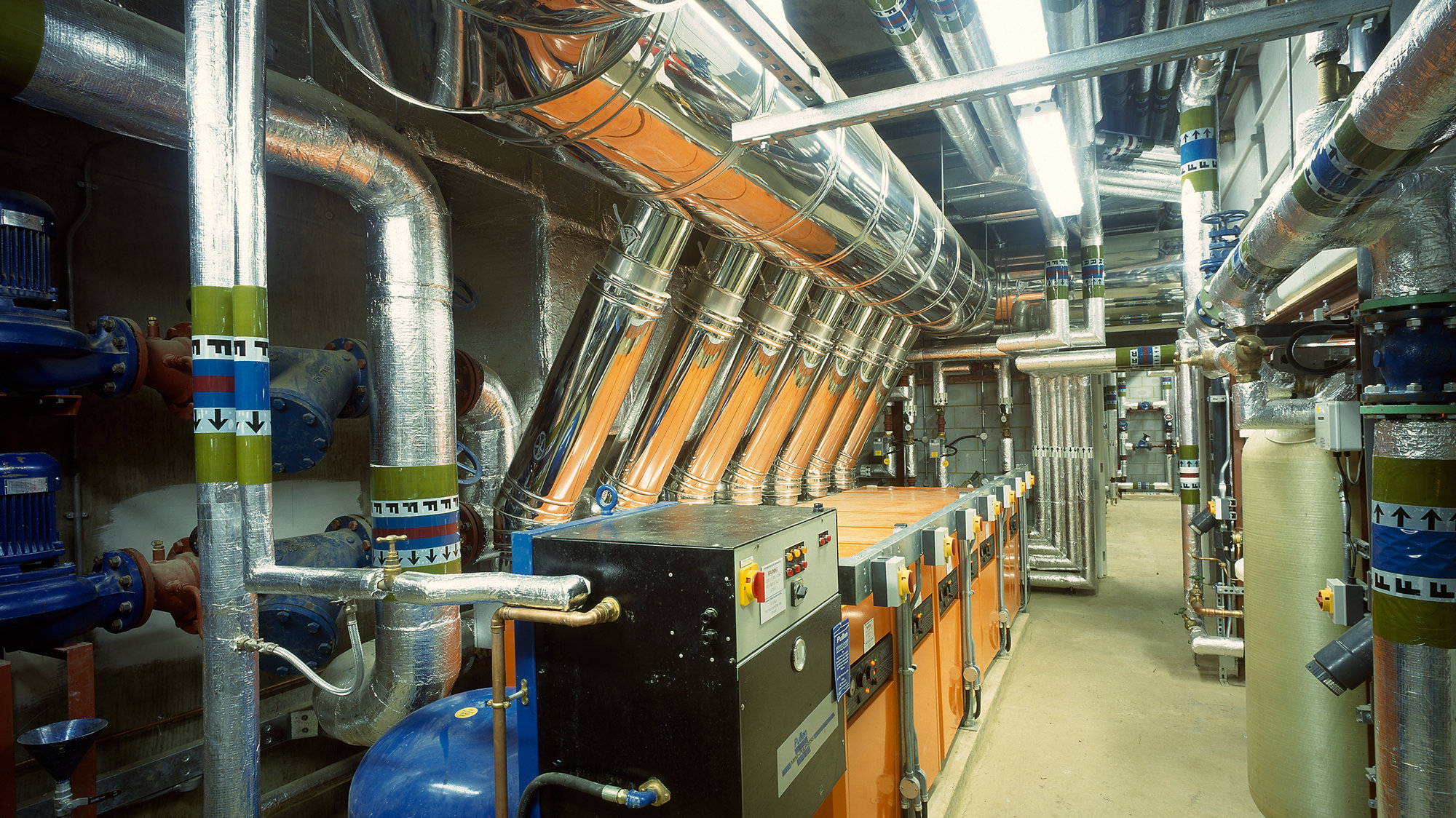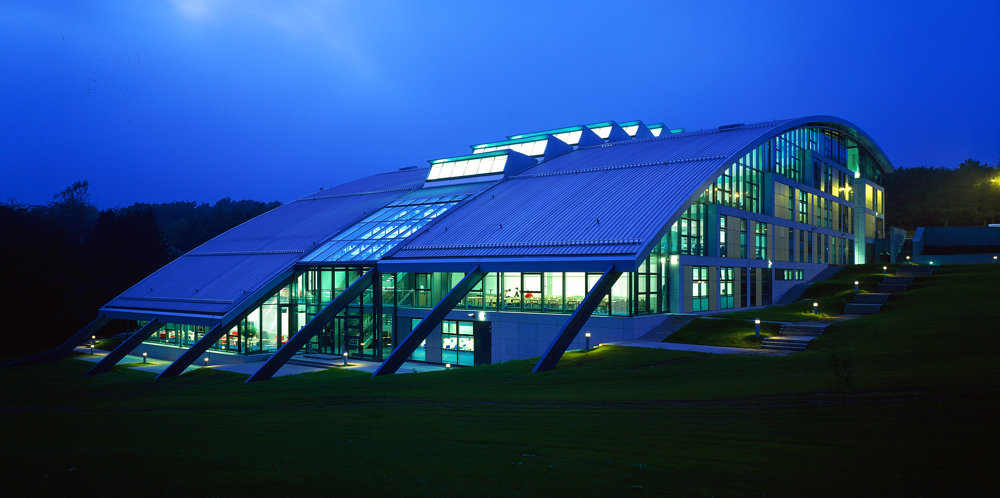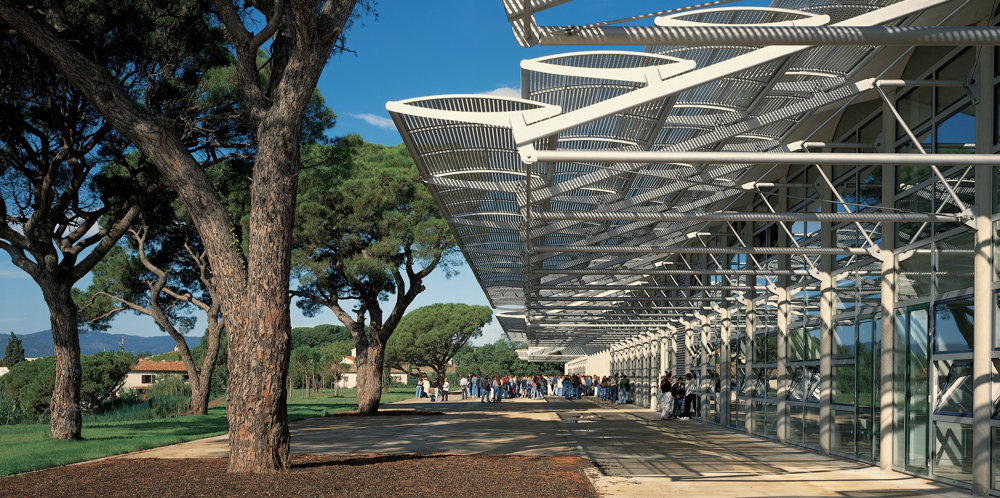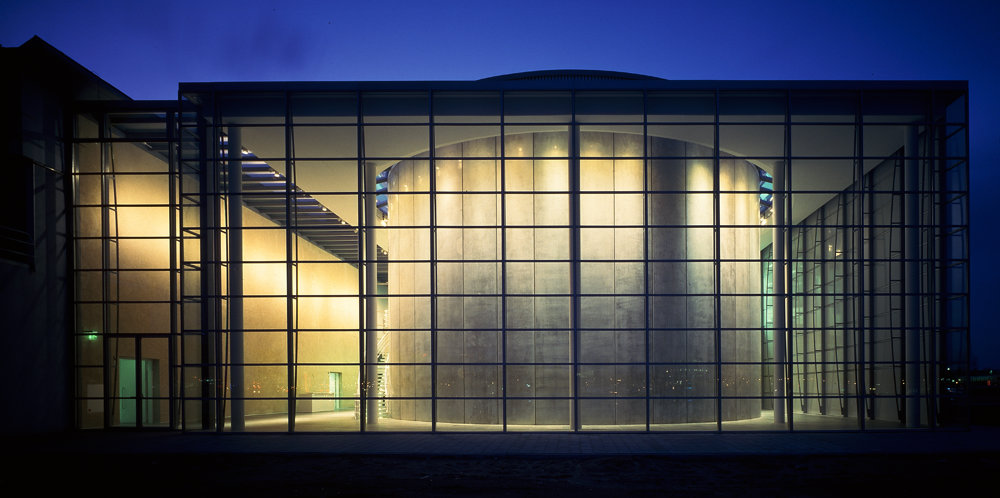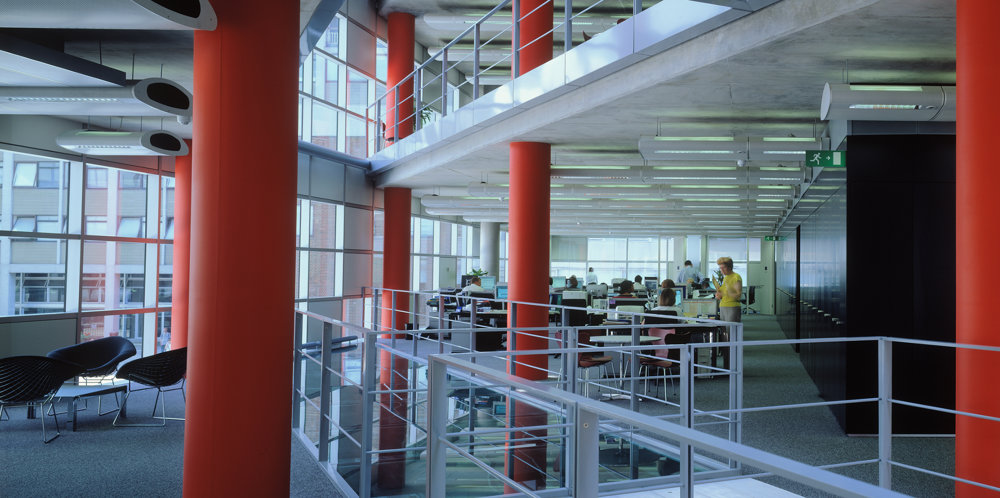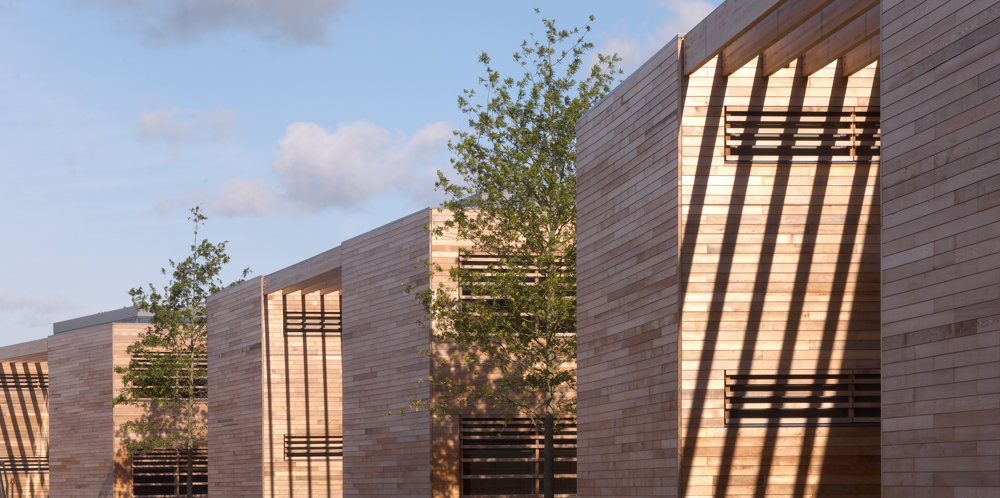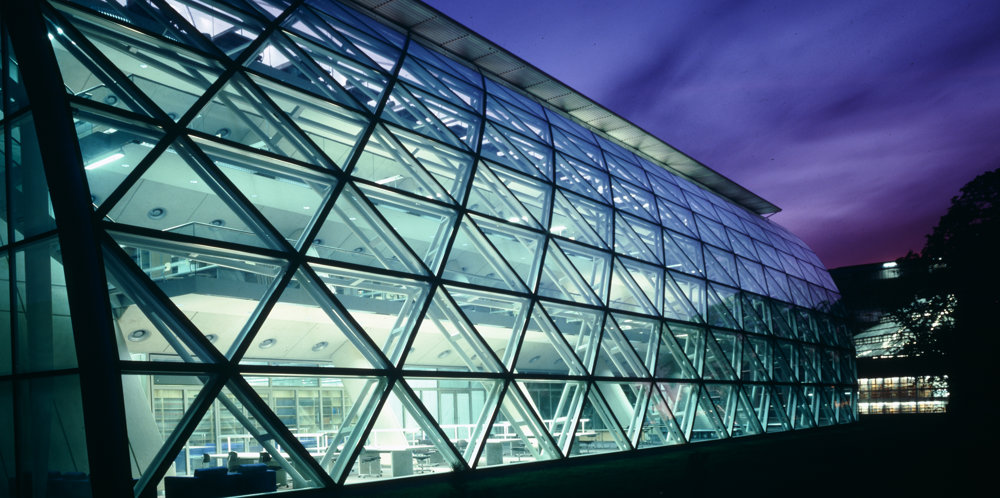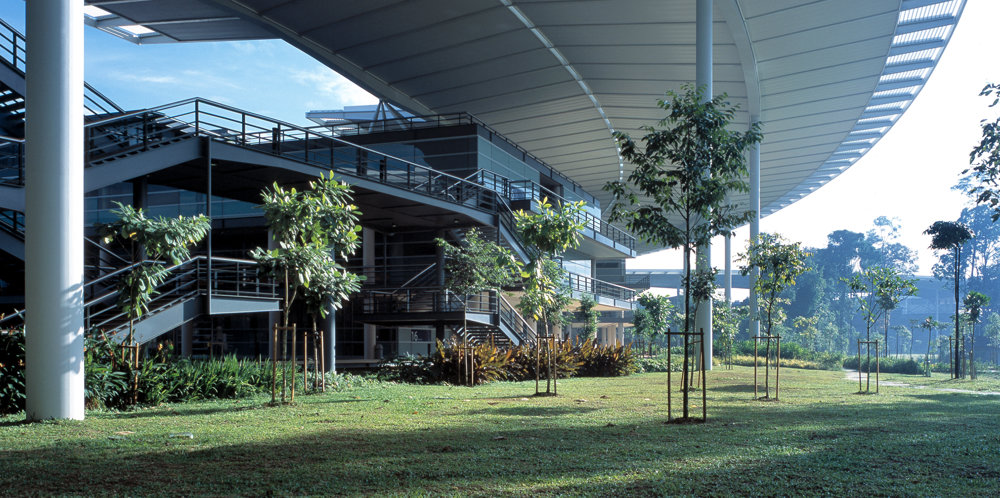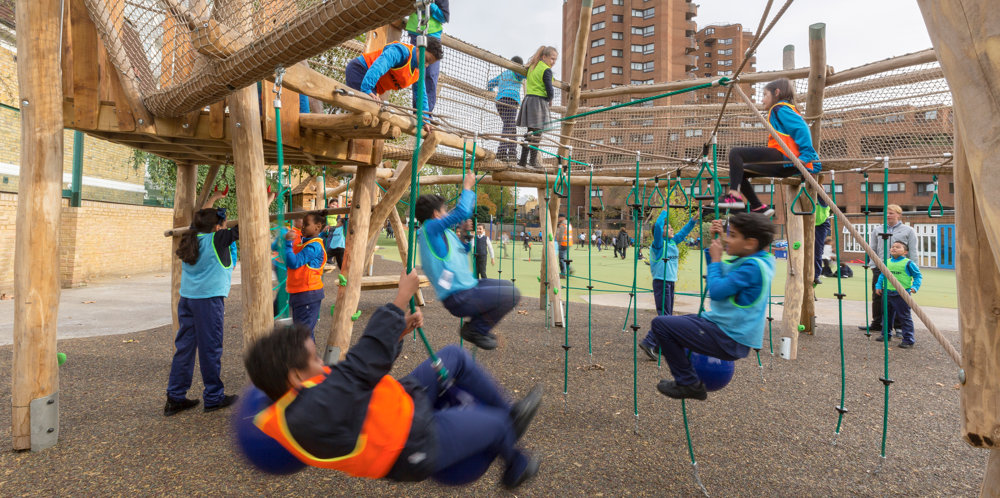The ASPIRE Centre provides training and rehabilitation for people with a wide range of disabilities. All of its facilities are fully accessible to users with mobility, hearing and visual impairments, as well as those with learning difficulties. Embedded in the design philosophy is the idea that architects need to explore comprehensive access as a matter of course, and the architects on the team consulted widely with institutions and individuals.
The Centre is located on the campus of the Royal National Orthopaedic Hospital in Stanmore. One of its central concerns is to provide courses to reintegrate patients from the hospital’s Spinal Injury Unit into everyday life and work. It also offers specific courses for people with disabilities who wish to become sports centre managers and trainers.
A two-storey, steel, glass and timber pavilion provides a competition-standard swimming pool, a café, a computer-training suite for the development of vocational skills, and a studio space for the mixed-mobility CandoCo dance company.
The pavilion is linked by a central reception area to the refurbished Mike Heaffey Sports and Rehabilitation Centre, which is noted for promoting the integration of able-bodied and disabled people. This building contains an enlarged fitness studio, a sports hall and administrative offices.
The swimming pool allows disabled users to enter the water unaided in specially designed wheelchairs. Pool activities include rehabilitative training, life-saving classes, water-confidence lessons and sporting events. There is space for full supervision and for the professional coaching of supervisors, managers and trainers.
The Centre has tactile signage and maps and coding on handrails, while hearing induction loops are fitted throughout. The design of the door thresholds, the widespread use of ramps and the location of all features - from the reception desk to signage - at an appropriate height, make the Centre fully accessible to wheelchair users.









